When it comes to brewing the perfect cup of espresso at home, Philips has carved out a reputation for delivering high-quality, user-friendly machines that satisfy even the most discerning coffee lovers. But with a range of models to choose from, finding the right one can be a bit overwhelming.
Enter the Philips Series 4300 vs 4400 Espresso Machines—two popular contenders that promise to elevate your coffee game. Whether you’re a seasoned barista or just starting to explore the world of espresso, understanding the differences between these two models is key to making the best choice for your coffee corner.
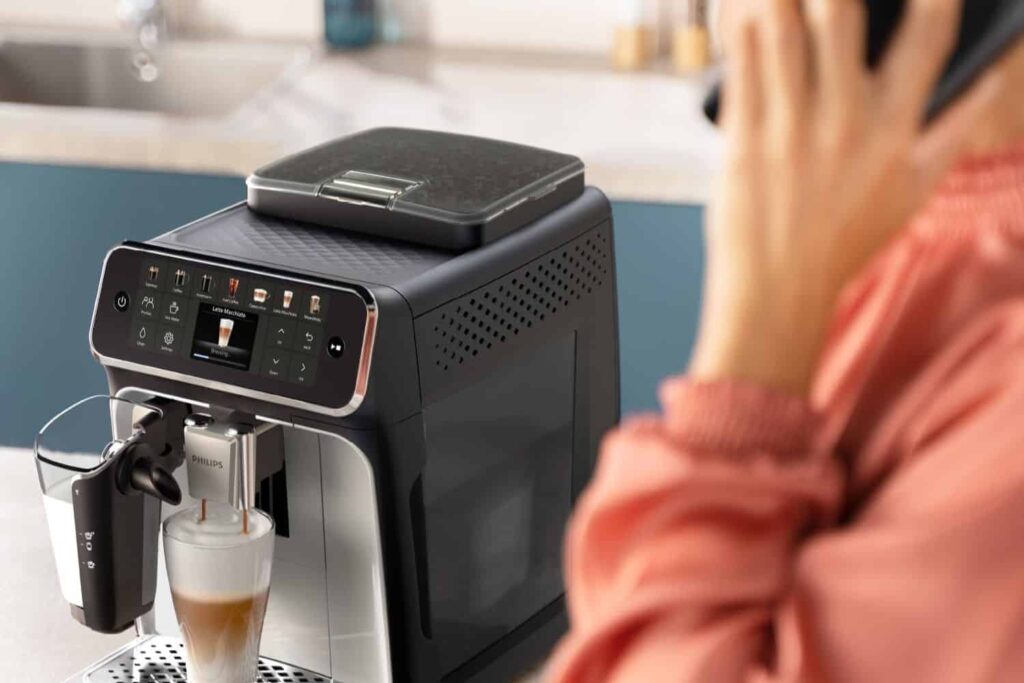
In this comprehensive comparison, we’ll break down the features, performance, and value of the Philips Series 4300 and 4400, helping you decide which machine is the perfect fit for your brewing needs.
Philips 4300 vs 4400 Espresso Machines Comparison
The Philips Series 4300 and 4400 Espresso Machines are two mid-range models that cater to coffee enthusiasts looking for convenience and quality in their home brewing experience.
Both machines are compact, stylish, and equipped with ceramic grinders and AquaClean filters, ensuring a consistent and high-quality brew with minimal maintenance. The main differences lie in the level of customization and the range of coffee options available.

Key Features Comparison
User Interface
The user interface is one of the first aspects to consider when comparing these models. The Philips Series 4300 features a simple and intuitive control panel with buttons and a basic digital display. This design ensures ease of use for beginners and seasoned coffee enthusiasts alike.
In contrast, the Philips Series 4400 elevates the user experience with a more sophisticated touch screen interface. This upgrade allows for a more seamless interaction with the machine, providing easy access to a variety of coffee options and customization features. The modern touch display on the 4400 not only enhances usability but also adds a sleek, contemporary look to your kitchen.
Brewing Technology
Philips 4300
The Philips 4300 is equipped with a reliable brewing system that includes a 15-bar pressure pump, essential for extracting the full range of flavors from your coffee grounds. It uses a Thermoblock heating system that ensures rapid heat-up times and maintains optimal brewing temperatures. This technology guarantees that each cup is brewed with the right balance of temperature and pressure, resulting in rich and aromatic espresso.
Philips 4400
The Philips 4400 takes brewing technology a step further. It also boasts a 15-bar pressure pump for excellent coffee extraction, but its advanced Thermoblock system offers even better temperature stability. Additionally, the 4400 includes the innovative LatteGo system, which makes frothing milk for cappuccinos and lattes easier and more consistent. This system is designed to deliver silky smooth milk foam with minimal effort, perfect for coffee lovers who enjoy milk-based beverages.
Design and Build Quality
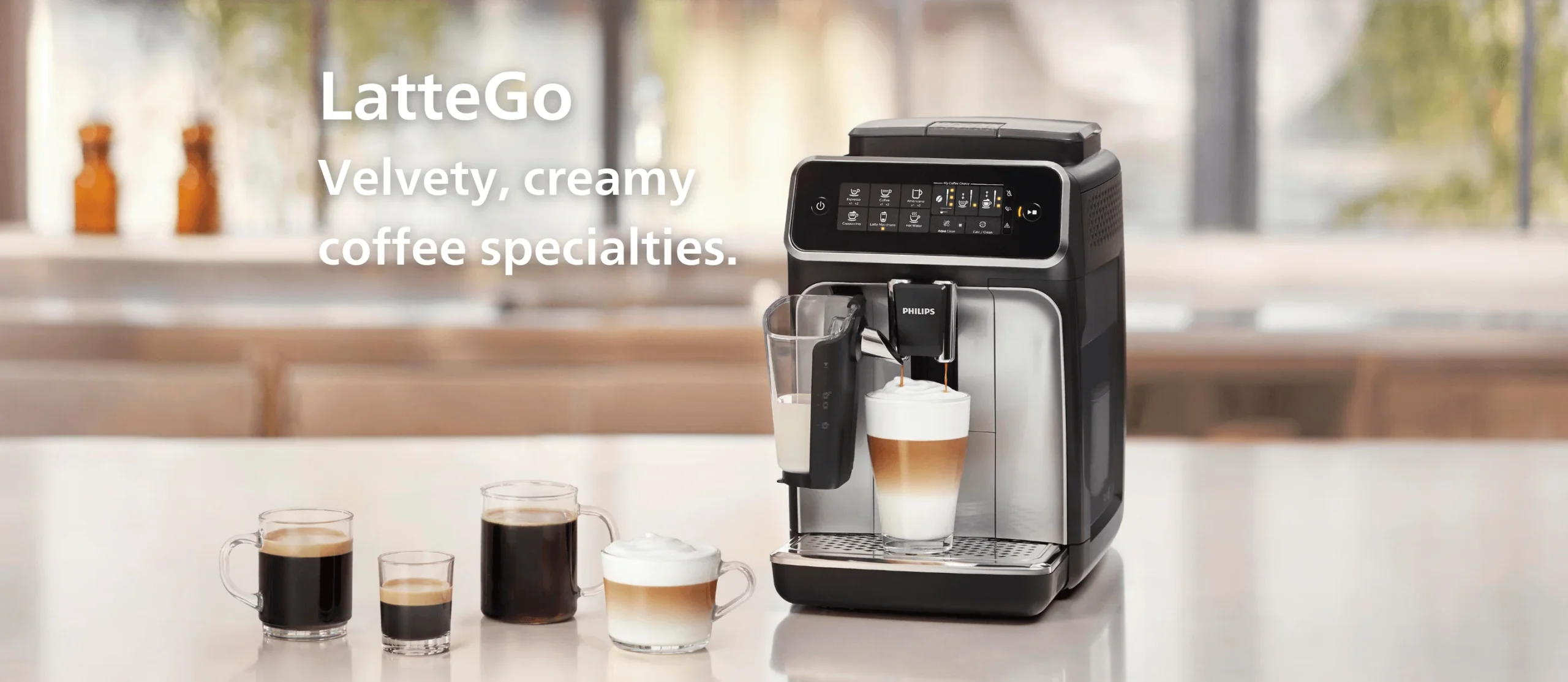
Philips 4300
The Philips 4300 is designed with a focus on durability and practicality. Its exterior is made of high-quality plastic with stainless steel accents, providing a blend of sturdiness and style. The machine’s classic design fits well into any kitchen, and its robust construction ensures that it can withstand daily use without showing signs of wear.
Philips 4400
On the other hand, the Philips 4400 offers a more modern and streamlined design. It features a premium build with a combination of metal and high-grade plastic, ensuring both durability and aesthetic appeal. The 4400’s compact footprint makes it an ideal choice for kitchens with limited counter space, while its minimalist design enhances the overall look of your coffee station.
Performance and User Experience
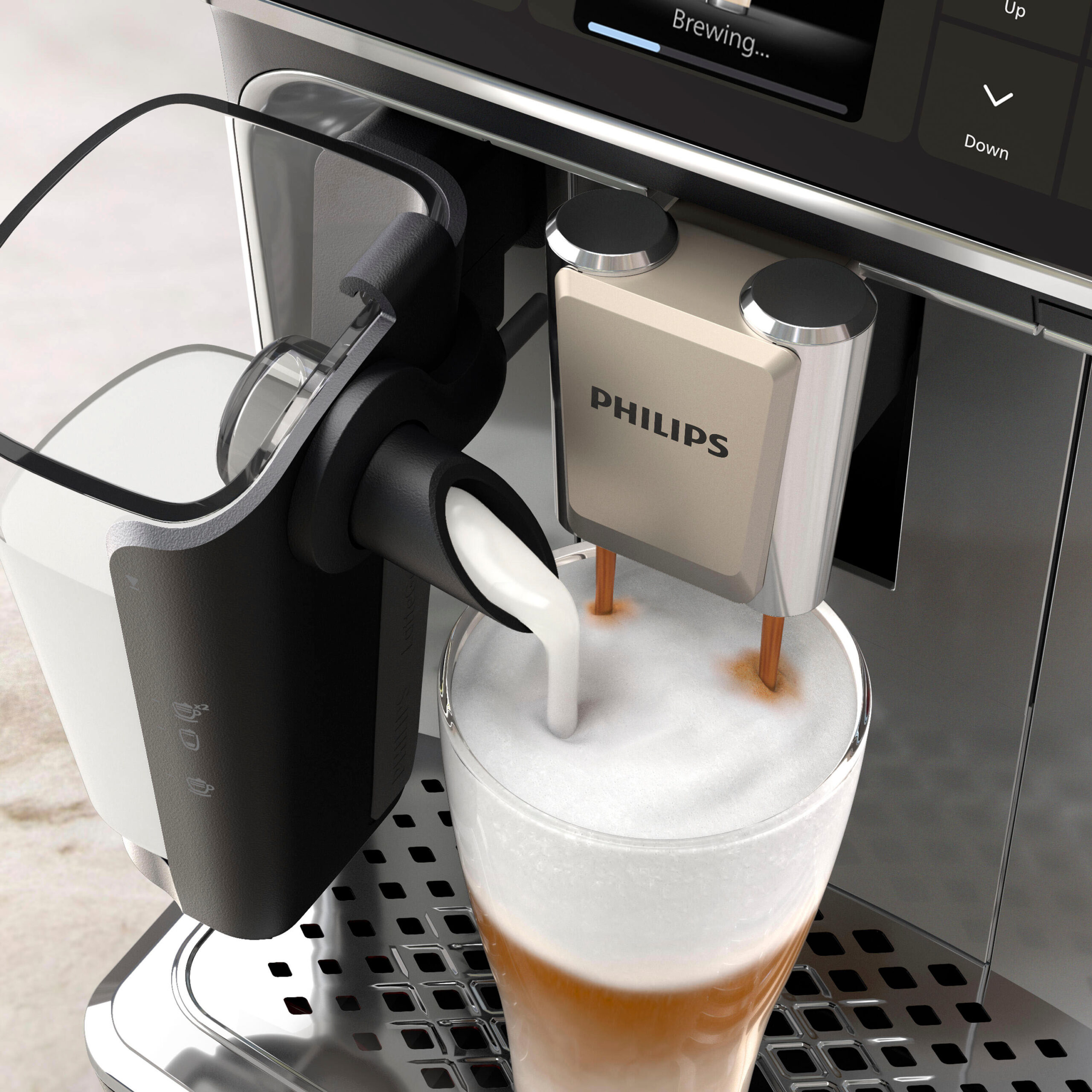
Philips 4300
The Philips 4300 delivers consistent performance with its 15-bar pressure pump, ensuring that every shot of espresso is rich and full-bodied. The machine heats up quickly thanks to its efficient Thermoblock system, reducing the wait time between brewing sessions. The straightforward control panel makes it easy for users to select their desired coffee type, whether it’s a simple espresso or a more complex cappuccino.
Philips 4400
The Philips 4400 builds on the solid foundation of the 4300 with several performance enhancements. Its improved Thermoblock system heats water more quickly and maintains stable temperatures throughout the brewing process. The touch display allows users to easily customize their drinks, adjusting settings like coffee strength, temperature, and volume. The addition of the LatteGo system also enhances the user experience by simplifying the process of frothing milk, making it easier to create professional-quality lattes and cappuccinos at home.
Ease of Use
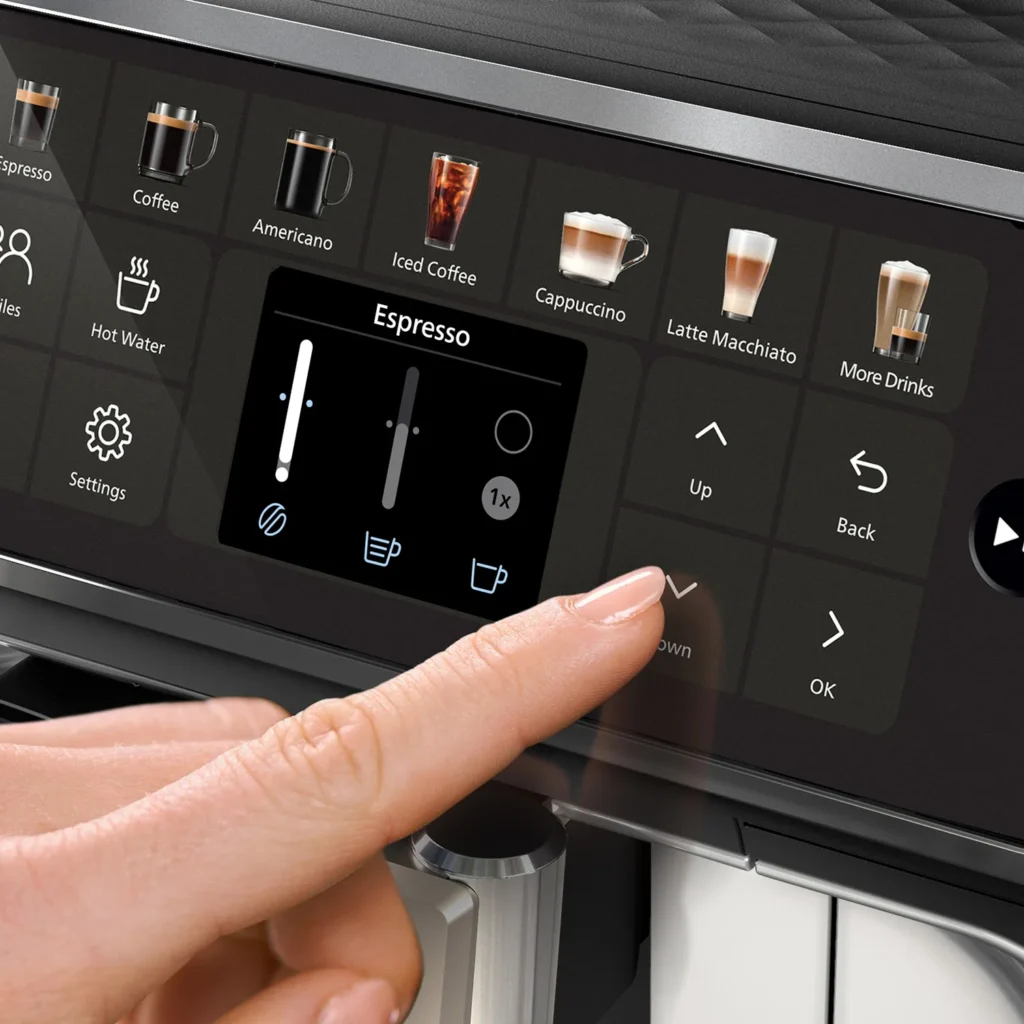
Philips 4300
The Philips 4300 is designed for simplicity and ease of use, making it a great choice for those new to home espresso machines. Its control panel is clearly labeled, with buttons for different coffee options, and the machine itself is easy to operate with minimal training. The 4300’s design minimizes the learning curve, allowing users to quickly become comfortable with brewing their favorite drinks.
Philips 4400
While the Philips 4400 offers more advanced features, it remains user-friendly. The touch screen interface is intuitive and easy to navigate, even for those who aren’t tech-savvy. The machine’s customizable settings allow users to tailor their coffee experience to their exact preferences, making it a versatile option for both beginners and experienced coffee makers. Despite its advanced capabilities, the 4400’s design ensures that it is accessible to all users.
Maintenance and Cleaning
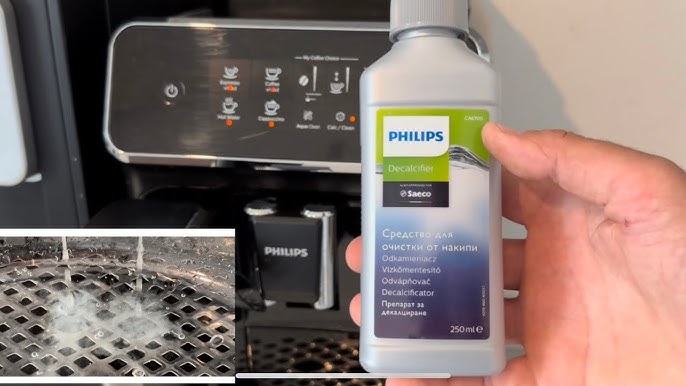
Philips 4300
Maintaining the Philips 4300 is straightforward, thanks to its removable brew group and dishwasher-safe components. The machine includes a descaling alert, which notifies users when it’s time to descale, ensuring that the machine continues to operate at peak performance. Regular cleaning of the drip tray, water tank, and other components is essential to keep the machine in top condition.
Philips 4400
The Philips 4400 is designed with convenience in mind when it comes to maintenance. The LatteGo system, for example, consists of only two parts with no tubes, making it incredibly easy to clean. The machine also features a removable brew group and several dishwasher-safe components, simplifying the cleaning process. Additionally, the 4400 includes automated cleaning and descaling alerts, ensuring that maintenance tasks are never overlooked.
Price and Value
When comparing the Philips Series 4300 and 4400, price is a significant factor to consider. Both models offer excellent value for their respective price points, but the decision ultimately depends on your budget and the features you prioritize.

Philips 4300
The Philips 4300 is typically positioned as a mid-range espresso machine, offering a good balance of features and affordability. It provides reliable performance and essential features at a reasonable price, making it a solid choice for those who want a quality espresso machine without breaking the bank.
Philips 4400
The Philips 4400, while more expensive than the 4300, justifies its higher price with a range of advanced features. The touch screen interface, enhanced Thermoblock system, and LatteGo milk frothing system add significant value, particularly for users who enjoy milk-based drinks or want more control over their brewing process. The higher price is well worth it for those who want a premium espresso experience.
Cost Comparison
When deciding between the Philips Series 4300 and 4400, it’s important to weigh the costs against the features and benefits each model offers.
Direct Price Comparison: The Philips 4300 is generally priced lower than the 4400, making it an attractive option for budget-conscious buyers. With prices typically ranging from $500 to $700, the 4300 offers a robust set of features at a competitive price.
In contrast, the Philips 4400 is a higher-end model, often priced between $700 and $900. This higher cost reflects the machine’s advanced capabilities, including the touch screen interface and LatteGo system, which provide a more refined and customizable coffee experience.
- Justifying the Higher Cost: The additional cost of the Philips 4400 can be justified by its enhanced features and superior user experience.
- Advanced Brewing Technology: The 4400’s improved Thermoblock system ensures faster heat-up times and more precise temperature control, making it easier to achieve the perfect espresso.
- User Interface: The modern touch screen interface on the 4400 offers a more intuitive and enjoyable user experience compared to the simpler control panel of the 4300. This makes it easier to navigate and customize your coffee drinks, enhancing overall satisfaction.
- Build Quality: The Philips 4400 features a more premium build, combining metal and high-quality plastic components for a more durable and aesthetically pleasing design. This not only improves the machine’s longevity but also its overall appeal.
- Customization Options: The 4400 allows for greater customization in brewing, enabling users to fine-tune their coffee to their exact preferences. This level of control is particularly valuable for those who enjoy experimenting with different coffee strengths and flavors.
While the Philips 4300 offers excellent value at a lower price, the Philips 4400’s higher cost is justified by its advanced features and enhanced user experience. For those who are passionate about their coffee and willing to invest in a more sophisticated machine, the Philips 4400 is a worthy investment.
Consumer Reviews and Feedback
Customer feedback is a valuable resource when deciding between the Philips Series 4300 and 4400. Understanding other users’ experiences can help you gauge satisfaction levels and identify potential issues with each model.
Positive Feedback
Philips 4300
Customers generally praise the Philips 4300 for its ease of use and consistent performance. The straightforward control panel and quality of espresso it produces are frequently mentioned as strong points. Users appreciate the machine’s reliability and the value it offers at its price point, making it a popular choice for those seeking a solid, no-frills espresso machine.
Philips 4400
The Philips 4400 receives high marks for its advanced features and user-friendly interface. Customers love the LatteGo system for its convenience and easy cleaning, while the touch screen display and customizable settings are often highlighted as standout features. Many users feel that the higher price is justified by the added convenience and performance, making it a favorite among coffee enthusiasts who seek a premium experience.
Criticisms and Issues
Philips 4300
Some users have reported minor issues with the Philips 4300, such as the need for regular descaling and occasional leaks from the water tank. A few customers also feel that the machine’s plastic components could be more durable. Despite these concerns, the overall feedback remains positive, with most users acknowledging that these issues are manageable given the machine’s price.

Philips 4400
The Philips 4400, while generally well-received, has its share of criticisms. Some users find the touch display to be overly sensitive, leading to accidental selections. A few customers have also reported inconsistencies with the LatteGo system, particularly in achieving the desired froth texture. Additionally, the higher price is a point of contention for budget-conscious buyers. Nevertheless, most users agree that the benefits outweigh these drawbacks, especially for those seeking a more sophisticated coffee machine.
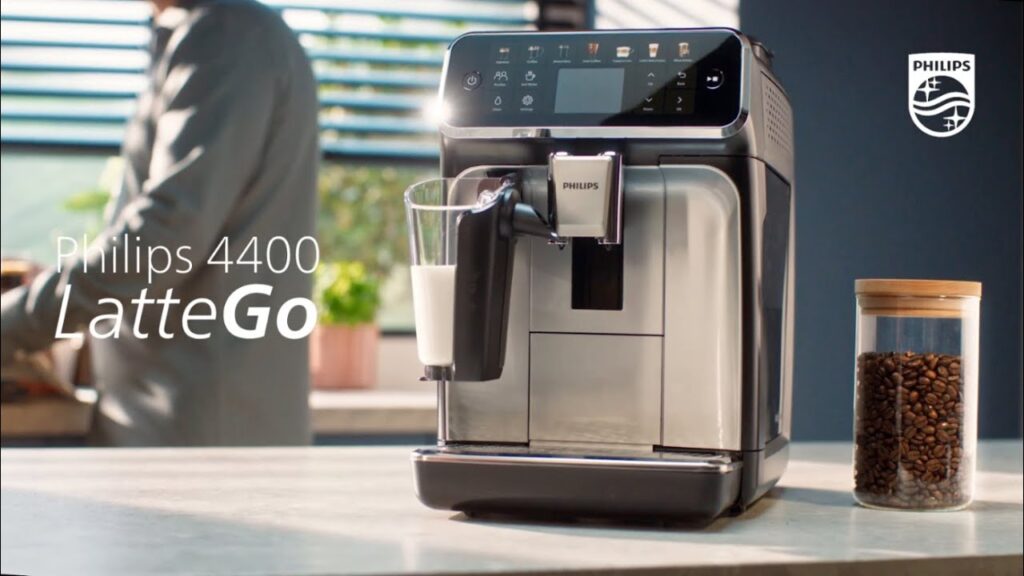
Conclusion
In summary, both the Philips Series 4300 and 4400 offer impressive features and performance, but they cater to different user preferences. The 4300 is ideal for those who value simplicity and reliability at a more affordable price, while the 4400 is perfect for coffee enthusiasts who want a premium experience with advanced customization options. Ultimately, the choice between these two models depends on your budget and the features that matter most to you.





